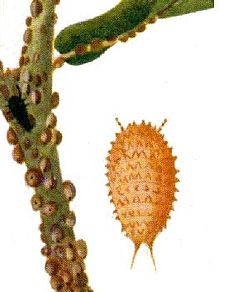| Eriococcus | |
|---|---|
 | |
| Eriococcus coriaceus (CSIRO) | |
| Scientific classification | |
| Domain: | Eukaryota |
| Kingdom: | Animalia |
| Phylum: | Arthropoda |
| Class: | Insecta |
| Order: | Hemiptera |
| Suborder: | Sternorrhyncha |
| Family: | Eriococcidae |
| Genus: | Eriococcus Targioni-Tozzetti, 1868 |
| Synonyms | |
| |
Eriococcus is the type genus of scale insects in the family Eriococcidae, erected by Targioni-Tozzetti in 1868. [1] Species records have a world-wide distribution, [2] but this genus name is known to be polyphyletic, [3] so species placement is subject to change.
Contents
